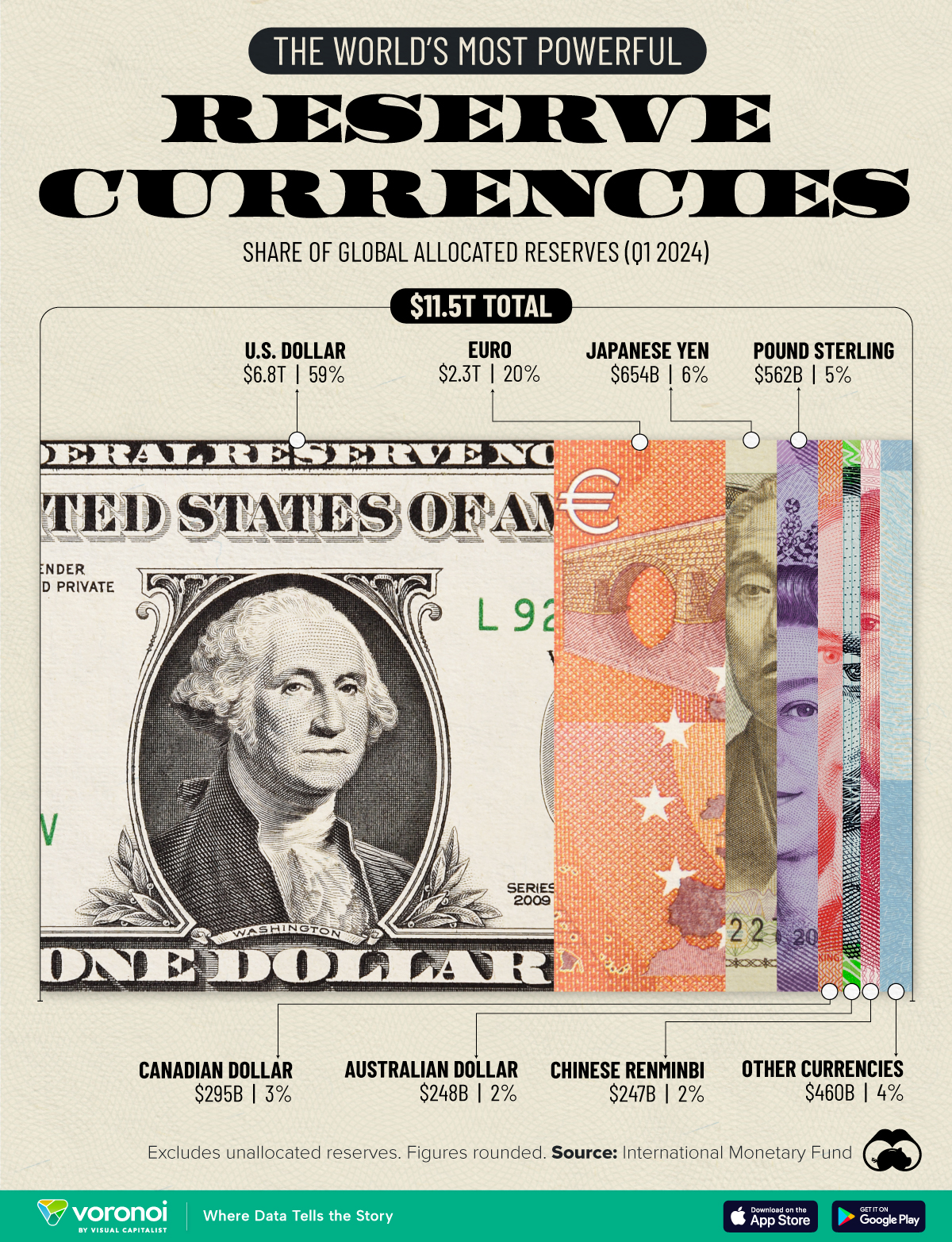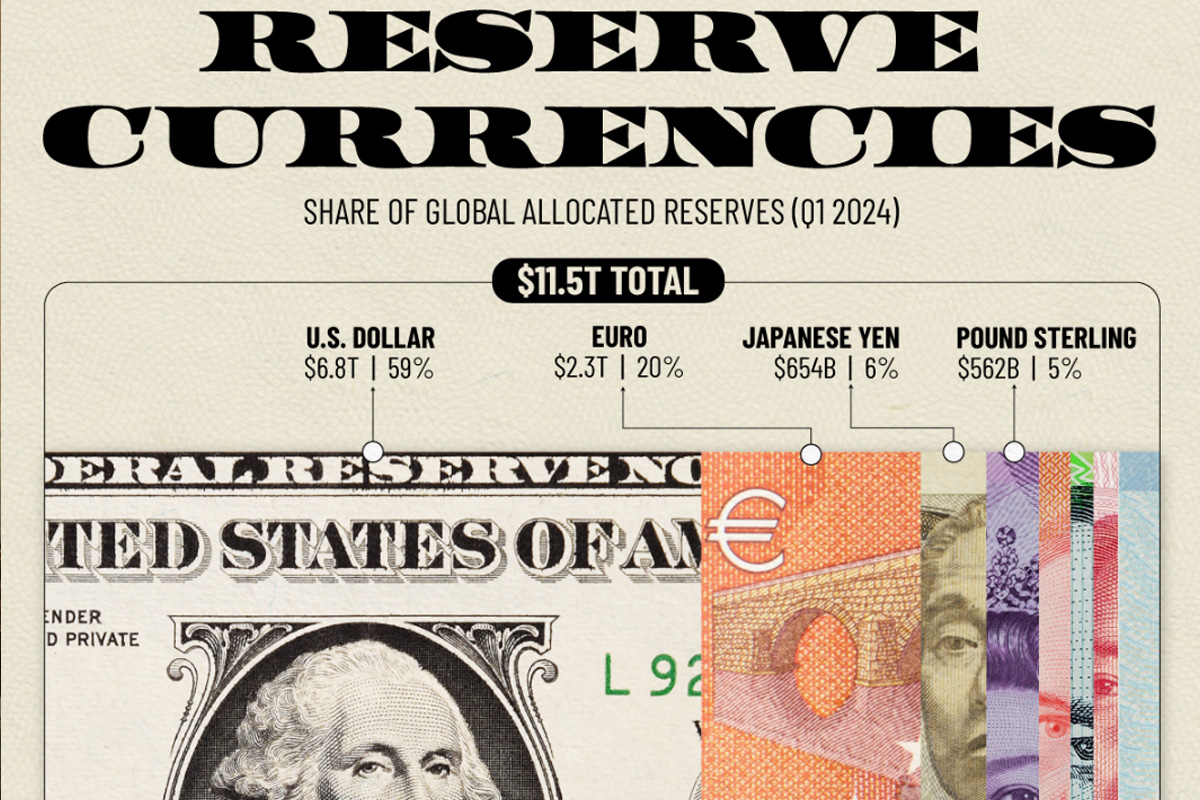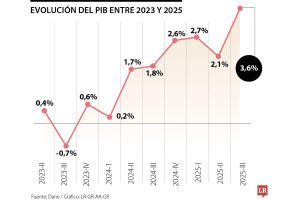
Ranked: The World’s Top Reserve Currencies in 2024
In this graphic, we’ve shown the world’s top reserve currencies as of Q1 2024, according to data from the International Monetary Fund (IMF).
It reveals that almost 60% of the world’s $11.5 trillion in foreign exchange reserves are denominated in U.S. dollars, explaining its nickname as “the world’s reserve currency”.
Data and Key Takeaways
All of the data we used to create this infographic is listed in the table below.
Note that some countries do not report financial information to the IMF, and their foreign currency reserves ($355 billion) were not accounted for in this graphic.
| Currency | Value (USD) | % Share |
|---|---|---|
| 🇺🇸 U.S. Dollar | $6,766,770,000,000 | 59% |
| 🇪🇺 Euro | $2,263,449,000,000 | 20% |
| 🇯🇵 Japanese Yen | $654,141,000,000 | 6% |
| 🇬🇧 Pound Sterling | $562,231,000,000 | 5% |
| 🇨🇦 Canadian Dollar | $295,223,000,000 | 3% |
| 🇦🇺 Australian Dollar | $248,365,000,000 | 2% |
| 🇨🇳 Chinese Renminbi | $246,944,000,000 | 2% |
| 🌍 Other | $460,321,000,000 | 4% |
The U.S. dollar and the euro are the top two reserve currencies by a very wide margin, though this dynamic has been changing over time.
As explained in a recent IMF blog post, the U.S. dollar’s dominance has eroded from over 70% of global reserves in 2000, to the 59% reported in Q1 2024.
Despite the reduced role of the dollar over the last two decades, there has not been significant increases in the shares of other major currencies (euro, yen, and pound sterling).
Instead, nontraditional reserve currencies like the Australian dollar, Canadian dollar, Chinese renminbi, and South Korean won have grown in prevalence.
These nontraditional reserve currencies are attractive to reserve managers because they provide diversification and relatively attractive yields, and because they have become increasingly easy to buy, sell and hold with the development of new digital financial technologies.
IMF (2024)
Who’s Holding China’s Renminbi?
Research from the IMF shows that increases in the share of reserves held in renminbi accounted for 25% of the shift away from the U.S. dollar in recent years.
In 2021, Russia accounted for nearly a third of all reserves in Chinese renminbi, worth roughly $105 billion at the time. The next biggest holders were Brazil (also a BRICS member), Switzerland, and Mexico.
Información extraída de: https://www.visualcapitalist.com/ranked-the-worlds-top-reserve-currencies-in-2024/







